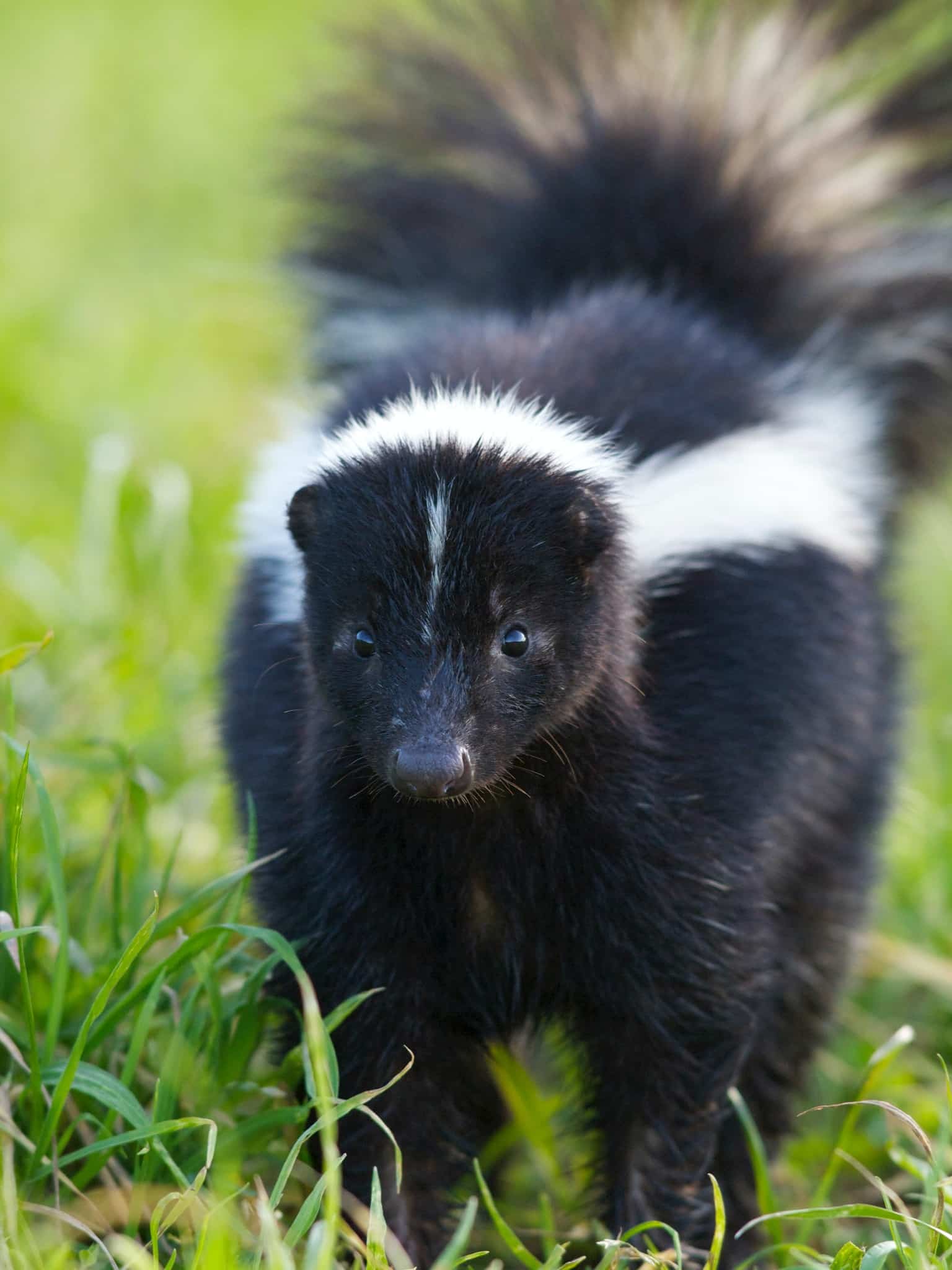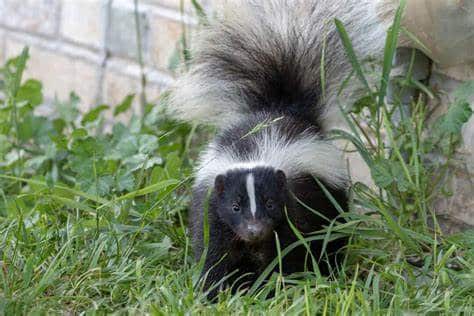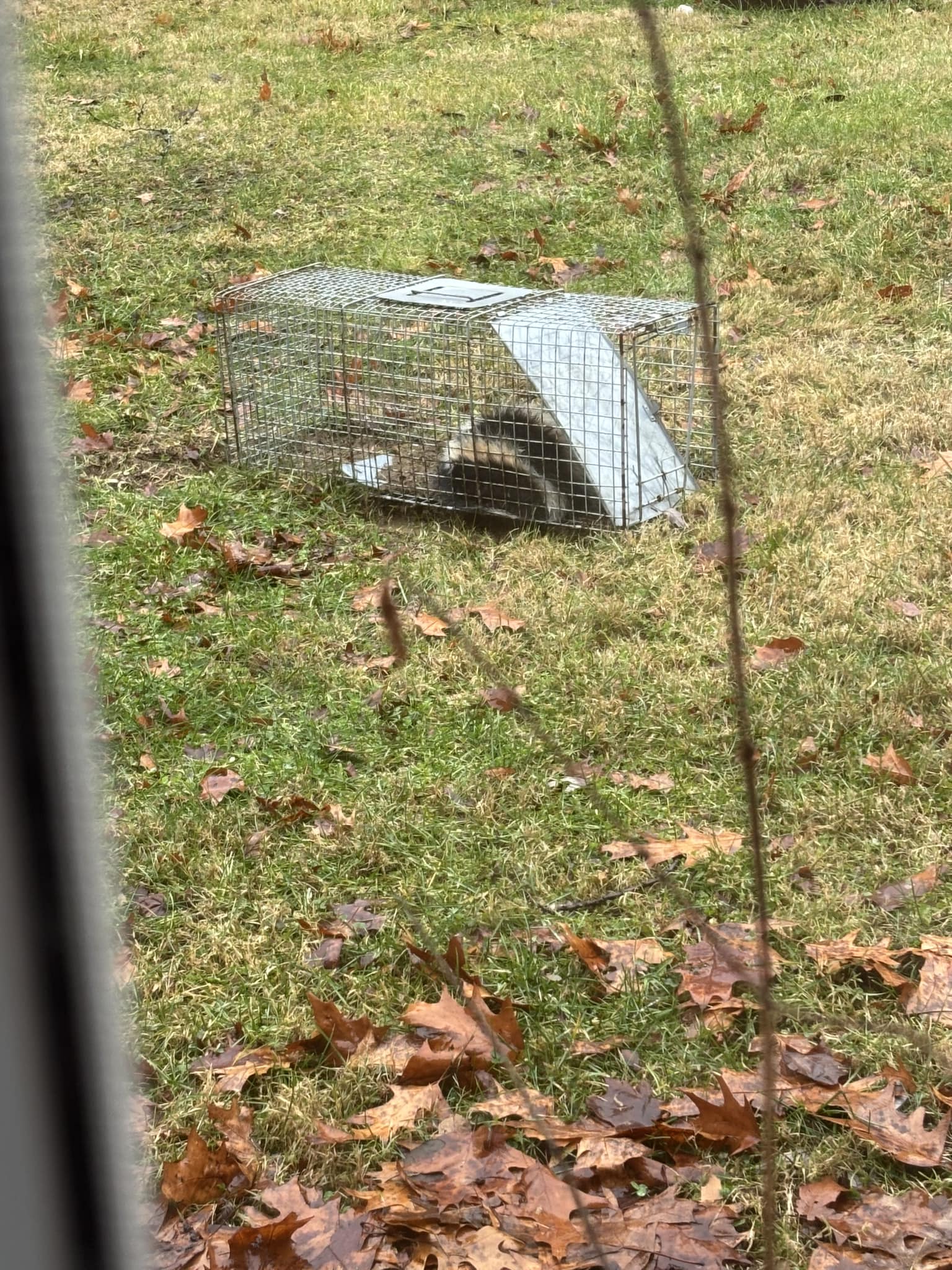Picture this: you come home after a long day at work, ready to relax in the comfort of your home, only to be greeted by an unwelcome stench that permeates the air. This leaves you wondering about the smell’s likely origin and how to reclaim your home.
Chances are, a skunk found its way to your house or yard. These nocturnal animals are renowned for their unique scent and tendency for mischief.
Therefore, although skunks are undeniably cute with fluffy tails and a beautiful black and white coat, you don’t want them taking up residence in your home.
So, let’s learn the different ways of getting rid of them.
How To Get Rid Of Skunks
Different ways of getting rid of skunks include:
1. Remove Food Sources
Food availability is a major reason for skunks visiting your house or yard, so deter these notorious scavengers by eliminating their food sources. You can significantly reduce their interest in lingering around your property by depriving them of easy meals.
Skunks have a diverse diet, consisting of both plant and animal matter. However, common skunk food sources include pet food, fallen fruits and vegetables, garbage, compost piles, and bird seed.
Since skunks are not avid climbers, they tend to eat food close to the ground. With the foods that attract skunks in mind, do the following to ensure they cannot access them.
a) Secure Pet Food
Have your pets eat indoors. If you must feed your pet food outdoors, do so during the day and remove food bowls at night.
b) Use Wildlife-Proof Garbage Bins
Invest in sturdy, wildlife-proof garbage bins with tight-fitting lids to prevent skunks from accessing food scraps. Alternatively, store garbage in a secure shed or garage until collection day.
c) Properly Manage Compost Piles
Oily food scraps, dairy, and meat can attract skunks, so do not add these substances to your compost pile. Also, regularly turn the compost to accelerate decomposition and reduce odors.
d) Harvest Fruits and Vegetables Promptly
Pick ripe fruits and vegetables from your garden as soon as they’re ready to deprive skunks of a delicious buffet. Dispose of any spoiled produce properly.
e) Install Bird Feeder Baffles
Use baffles or trays under bird feeders to catch spilled seeds and prevent skunks from accessing them. Moreover, consider switching to seed blends that are less attractive to wildlife.
Related Posts:
- How to Get Skunk Smell Off Your Dog
- How To Get Rid Of Voles In Your Yard Naturally
- How To Get Rid of Moles In Yard and Garden
2. Identify and Block Entry Points
Skunks will exploit even the smallest openings or vulnerabilities in your structures to access your house or yard. Common entry points these creatures can use are crawl spaces, under decks and porches, attics, sheds, garages, and fences.
Inspect these areas to identify any vulnerabilities like gaps, cracks, and holes, then seal them. Install sturdy mesh or wire barriers around crawl space openings, repair damaged roof shingles, seal gaps around eaves and soffits, and install vent covers.
Also, enclose the area under decks and porches with wire mesh or lattice, install weather stripping around doors and windows, and patch holes or gaps in fences with sturdy materials.
3. Block Access To Possible Denning Spots
Aside from food, skunks will come to your home for shelter. They prefer denning in dark, secluded areas, where they can safely raise their young and seek refuge from predators and harsh weather conditions. These include crawl spaces, under porches and decks, sheds, dense vegetation, garages, and woodpiles.
Restrict access to these areas with metal flashing, boards, or hardware cloth. Additionally, trim overgrown bushes, shrubs, and tall grass to reduce hiding spots and discourage skunks from establishing dens in your yard.
Also, stack firewood on raised platforms or store it in covered containers to deter skunks from using woodpiles as denning sites.
4. Install Fencing
Keep skunks out by surrounding your property with a robust fence. The appropriate fencing that skunks cannot jump or climb over is at least 3 feet tall and made of durable materials that are also resistant to damage from weather, wildlife, and pests. Common options include chain-link, wire mesh, vinyl, or wood.
Make sure your fence does not have gaps or openings that skunks can squeeze through, so choose solid panels or closely spaced picket designs.
How To Install Fencing To Deter Skunks
- Measure your property’s perimeter to determine how much fencing material you need. Next, plan the fencing layout to create a continuous barrier around vulnerable areas.
- Remove obstacles like vegetation and debris from the perimeter.
- Place fence posts at consistent intervals along the perimeter, then stabilize them with concrete or gravel.
- Fasten the fencing material securely to the posts, ensuring it remains stretched and taut.
- Install gates at entry points for convenient access. Secure the gates well and equip them with locks or latches to prevent skunks from bypassing the fencing.
5. Install Motion-Activated Lights and Sprinklers
Like many nocturnal creatures, skunks are sensitive to sudden environmental changes. In that case, you can startle and drive them away from your home with sudden bursts of light or water from motion-activated lights and sprinklers.
Choose devices with sufficient coverage to protect the areas where skunks are most likely to frequent, such as entry points, garbage bins, or garden beds. Also, it would be best if they had adjustable sensitivity and range settings.
Place your lights or sprinklers near potential entry points, along skunk travel routes, or in areas where skunks are known to forage for food.
6. Use Noise and Vibrations
You can effectively deter skunks from your house and yard by introducing sudden, loud noises or vibrations that disrupt their behavior and encourage them to flee the area. The sound-based solutions to consider are ultrasonic devices, wind chimes and bells, whistles or alarms, and radio or music.
Place these devices strategically in areas where skunks frequent.
7. Humane Trapping
Why kill skunks when they can comfortably live in more suitable habitats far from your property? Humane traps offer a compassionate and effective method for removing skunks from your house and yard without causing harm.
Purchase a sizeable live trap for capturing skunks. In addition, choose a sturdy, durable trap made of materials such as galvanized steel or heavy-duty wire mesh to withstand outdoor conditions and prevent escape.
Moreover, opt for traps with sensitive trigger mechanisms that are easy to set and activate, ensuring reliable capture of skunks. Furthermore, look for traps with smooth edges and secure locking mechanisms to prevent injury to the skunks and yourself during handling and transport.
How To Set Up Live Traps To Capture Skunks
- Set the trap on level ground and make sure it is stable and securely anchored to prevent tipping over or displacement by skunks. Place your traps near entry points, den entrances, or areas with signs of digging or foraging.
- Place bait such as canned fish, cat food, or peanut butter at the back of the trap to lure skunks inside. Do not use baits that may harm skunks or other non-target animals.
Carefully set the trigger mechanism per the manufacturer’s instructions.
8. Apply Pepper Spray
Pepper spray won’t harm the skunks permanently. But, since it contains capsaicin, the pungent odor and irritant, it emits will help deter skunks from approaching or entering your house and yard. For this repellent to work, choose pepper spray with a sufficient concentration of capsaicin.
Also, select a delivery method that allows for easy and precise application in the areas where skunks are likely to frequent. The options include aerosol sprays, pump sprays, and foggers.
Spray the pepper spray in areas where skunks are likely to enter or linger, such as around your house’s perimeter, near entry points, or where you have observed skunks.
9. Use Predator Urine
Skunks will steer clear of your yard and house if they can sense the presence of their predators, like coyotes, bobcats, and foxes. The good news is that these animals do not have to be near or on your property for this method to work.
By strategically applying it in skunk-prone areas, you can create a barrier to deter skunks with predator urine. The application methods include liquid form, granules, or soaked pads.
When sourcing the urine, pick the ones from reputable suppliers and free from contaminants or additives. Furthermore, make sure the urine is collected ethically and the predator animals are not harmed in the process.
10. Try Orange and Lemon Peels

Citrus peels contain natural oils and scents, such as limonene and citronella, that are unpleasant to skunks. So, orange and lemon peels can deter skunks from your property.
Gather orange and lemon peels from fresh fruit, then cut or chop them into small pieces to release more natural oils and scents. Alternatively, use a grater to create zest from the peels.
Once you have your peels, scatter them around the perimeter of your house, near entry points such as doors, windows, or vents, and in areas where skunks often frequent. Replace the citrus peels with fresh ones every few days. Fresh peels release more potent scents and oils.
Summary
With the right approach, dealing with a skunk invasion in your yard or house doesn’t have to be tough. Strive to understand behavior, implement preventative measures, and employ humane removal techniques for a skunk-free home. As you reclaim your home from these small creatures, proceed cautiously because they can spray if threatened.

I’m Mike Hyle, an exterminator with 7+ years of experience handling all sorts of pests, including mice, cockroaches, bed bugs, and termites. I also write for Pest Solutions DIY blog to share my knowledge and help homeowners keep their homes pest-free. Outside work, I enjoy hunting, snowshoeing, and exploring nature. Check out my blog for helpful pest control tips!




